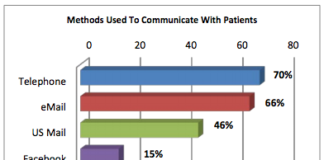“The Food & Drug Administration is planning to release guidance for mobile medical applications in 2011, according to Center for Devices and Radiological Health director Dr. Jeffrey Shuren.” That was reported in this story relaying comments made at a “town hall meeting” held March 10 in Irving, Texas.
I don’t know nearly as much about Dr. Jeffrey Shuren as I do about Tom Abrams, his counterpart in FDA’s DDMAC. But if he’s making more promises that the FDA hasn’t the ability to keep, then I urge that he resign along with Tom Abrams (see “Is It Time for Abrams to Leave?“).
As you probably know, DDMAC first “promised” that it would issue social media guidance for pharmaceutical promotion by the end of 2010. When they missed that date, Abrams “promised” it would be done by the end of Q1 20011, which leaves only about 2 weeks for the FDA to fulfill that “promise.”
Most observers, however, believe FDA will not deliver social media guidance before April Fool’s Day 2011. Considering the looming budget cuts suggested by some anti-government bloat lawmakers, it could be a cold day in hell before FDA can spare the resources to get the job done as “promised.”
Regarding mobile devices FDA has a much, much greater challenge in issuing guidance. The issue has to do with agency approval of Mobile medical applications as medical devices. So far, FDA has approved two mobile applications:
- MobiUS, a smartphone-based ultrasound imaging application for use in obstetric, gastrointestinal, cardiac andother clinical applications.
- Mobile MIM, a mobile diagnostic radiology application that facilitates viewing of medical images for diagnostic purposes via Apple’s iPhone and iPad devices.
FDA approval of these devices/applications hinged on image quality (see FDA Press Release). Of much greater concern, however, are applications that involve more complicated software. Whether or not the FDA would regulate mobile software has been an issue for nearly two years.
Is the FDA technologically competent enough to evaluate mobile App software? It’s a valid question considering that many people have doubted that FDA was competent enough to understand social media and issue guidance in that realm. Software, which operates behind the scenes, is even more of a challenge.
Faulty software can make medical devices dangerous. Think of “HAL” in charge of millions of pacemakers. That sort of thing.
There is a relation between mobile medical Apps and pharmaceutical marketing. Many pharmaceutical marketers are developing mobile Apps. The latest one I’ve come across is Janssen’s “Psoriasis” app for the iPhone and iPad (see it here on iTunes).
The physician version — which any non-physician can easily access — includes a “PASI calculator.” PASI stands for “Psoriasis Area and Severity Index,” which is a tool for the measurement of severity of psoriasis. According to the wikipedia entry, the following formula is used to calculate PASI:
I won’t get into the details here, but I wonder if this is the equation used in the software that calculates PASI in Janssen’s Psoriasis App? Does the software implement the equation correctly? Has it been tested and certified as correct? By whom?
Jannsen does include this statement in its disclaimer: “The information provided on this App is not a substitute for professional medical care.” This is par for the course when dealing with consumers who may be using the PASI calculator without medical supervision.
But I can’t find any information about the clinical validity of the PASI calculator, which is an issue I’ve often blogged about (see, for example, “Pharma Symptom Quiz Goes to the Dogs!” and links therein).
This is just a simple example of a medical App that depends on the accuracy of its software to function properly. If marketers design the Apps and hire outside tech agencies to develop the Apps, then there is the possibility that the software can be “gamed” to provide desired results (eg, higher PASI score) much like the software of Vegas slot machines are “gamed” to favor the house.
Is the Janssen Psoriasis App a medical device that needs to be approved by the FDA? I think that’s a valid question to ask since the App encourages physicians to use it: “This interactive PASI calculator enables you to generate a PASI score for your patients.”
P.S. Janssen says that the Psoriasis iPhone App is “Intended for a European audience.” But it — like ALL iPhone Apps — is available on iTunes, which is a US retail Web site. Does that trump “intention” and does intention matter as far as the FDA is concerned?
P.S. See “Checking Under the Hood of Pharma Mobile Apps” for an update.










![6 Digital Tools at the Center of Healthcare Digitalization [INFOGRAPHIC]](http://ec2-54-175-84-28.compute-1.amazonaws.com/pharma-mkting.com/wp-content/uploads/2021/04/6DigitalTools_600px-100x70.jpg)




